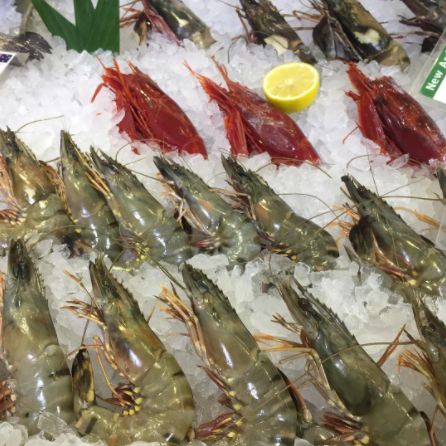These Are 8 Of The Tastiest Invasive Species To Eat

It sounds crazy, but you have to do your part to save the world… by eating. Twist your arm, right? In all seriousness, you actually can help the environment by eating particular animals.
Invasive species are any kind of living organism (plant or animal) that rapidly multiply and threaten the ecosystem they live in. There are a few ways to stop them, best of which is eating them! Here are eight of the most delicious invasive species that you can eat while simultaneously saving the environment.
Prickly Pear
Common in drier areas of the world, the prickly pear is one of the most invasive species of cactus. And one of the most delicious. A classic Southwestern U.S. and Mexican prickly pear dish is frying strips of the cactus with eggs and jalapenos for a proper breakfast treat. If you catch the pear while it’s young, the dangerous pines won’t have hardened yet, so you can enjoy it skinned or unskinned.
Garlic Mustard
A plant by any other name would hardly smell as… sweet. Once you harvest this wild flower, you can wash off the leaves and enjoy them raw in salads. If given time to age, they become more bitter and taste great in soups, marinades, and meat rubs. Our favorite way to enjoy this invasive plant? Turning it into a garlic mustard pesto. Who says saving the environment is hard?
Green Crab
Like you need another excuse to enjoy crab. Native to the Atlantic, green crabs are unignorable along the Atlantic’s east coast. Literally. Flip over a rock in Maine or Massachusetts, and there is guaranteed to be a million green crabs. Italian cooks generally place the crab in egg mixture and then fry the meat. If fried crab isn’t your thing, they also taste amazing in risotto and minestrone dishes.
Wild Fennel
This invasive plant can grow up to seven feet tall, and the seeds easily get dispersed by water and wind, which means they’re everywhere. Do your part and use this fennel whenever you can in your cooking. Wild fennel is already a pretty popular herb, but it still persists to grow like…well, wild. Just do yourself a favor and don’t confuse it with hemlock, fennel’s very poisonous evil twin.
Nutria
This one seems a little gross, but you have to trust us. The nutria – also known as coypu – is a large beaver-sized rodent with a long rat tail that thrives in tropical South America and in some southern parts of the U.S. Still with us? Cool. Nutria tend to destroy most of the plant-life around them. This makes them a hazard to the ecosystem, but a blessing to our stomachs. If you can get past the fact that you’re eating a 20-pound swamp rat, you will really enjoy snapping into some nutria Slim Jims. Yeah, we’re not jerking you around.
Snakeheads
These fish are terrifying… ly delicious! The snakehead is a fish that originated in Asia that doesn’t look or play nice. Snakeheads eat everything in sight, and can even breathe air and walk on land. IT’S A NIGHTMARE. These snakeheads, however, taste fantastic in classic Asian stew. One restaurant in Maryland makes a great snakehead ceviche with citrus and cilantro, which sounds much better than imagining these fish walking out of the ocean and taking over the world.
Wild Boar
This one is pretty self-explanatory. Wild boar is served up pretty commonly at higher end restaurants and for good reason. Wild boars (and their distant cousins, feral pigs) tend to interbreed in the woods of North America and Europe and run amuck. But they’re also, quite literally, the pork that we all know and love. World-saving pork chops anyone?
Giant Cannibal Shrimp
They’re cannibal shrimp. Save the other shrimp of the world and eat the giant shrimp. Also known as Asian Tiger Shrimp, these guys can grow as big as thirteen inches long, which is about the size of a lobster. Lobster-sized shrimp cocktail? YES, PLEASE.






















